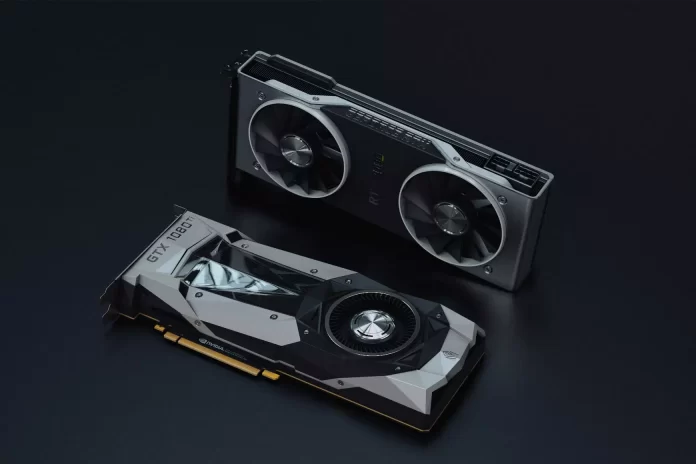If your PC requirements are relatively simple, and you use it only for Internet surfing, watching streaming videos, simple photo editing, or simple games, you can easily get by with the power of the integrated GPU. However, for more powerful games, viewing the content in very high definition, video editing, and professional 3D modeling you will need a special graphics card.
Many people are well aware of the fact that you can connect not one but two or even three or more graphics cards into the motherboard. However, users with more experience know that they shouldn’t be expected to sum up the “power”, as well as double or triple performance. Even if you want to. Both AMD and Nvidia offer solutions to work with two or more graphics cards. However, to understand whether it’s worth buying and using two graphics cards on your PC, you need to consider the requirements and benefits.
What is a graphics card (GPU)?
The definition of “video card” is known even to those who don’t care much about the “stuffing” of their PC. However, this necessary part is also called many other terms. For example, graphics adapter, graphics booster, video adapter, graphics card, or GPU.
No matter how you call it, its function doesn’t change. The task of the video card is to render the image and display it. Simply put, any video adapter is responsible for creating an image and transmitting it to the monitor. However, there’s a difference between various GPUs. Gamers, for whom image quality is one of the main requirements for a PC, are well aware of this.
All graphics cards come in two varieties: integrated and discrete. GPUs built into the motherboard are called integrated. This part, as many have already guessed, cannot be replaced, and you have to put up with the image quality available. However, this doesn’t mean that integrated graphics cards give a bad picture. Their power is enough for office PCs, which aren’t designed for working with video or complicated graphics.
Discrete cards are a real salvation for all gamers. This type of graphics card is a part that’s installed in the motherboard separately. Such GPUs are the most popular and are on the market in abundance. Moreover, the performance of discrete graphics cards can be improved through overclocking.
Read Also:
- How much RAM Is enough for gaming in 2022
- Do you need a dedicated sound card for your PC?
- How to turn on hardware acceleration on your PC
What are the benefits of using two GPUs?
There are two true benefits of running multiple graphics cards. The main reason is the increased performance in games. With two or more graphics cards that share features for rendering 3D images, PC games can run at higher FPS and higher resolutions and with additional filters. This extra capacity can significantly improve the quality of graphics in games.
Of course, many modern graphics cards can play a game at up to 1080p resolution. The true advantage is the ability to play higher resolution games, such as on 4K displays, which have four times the resolution, or to use multiple monitors. However, of course, for full immersion, you also need a good modern gaming monitor.
Another advantage is for people who want to upgrade later without having to replace their graphics card. By buying a graphics card and a motherboard that can handle two cards, you can add a second graphics card later to improve performance without having to remove the existing graphics card.
The only problem with this plan is that the video card cycles about every 18 months, which means that a compatible card may be hard to find unless you intend to purchase one within two years.
What are the disadvantages of using two GPUs?
A big disadvantage of having two graphics cards in one computer is the cost. Since top graphics cards already cost $500 or more, many consumers find it difficult to afford a second one. Because of this, it is often better to spend the same amount of money on one card with the same or sometimes better performance than on two inexpensive ones.
Another problem is that not all games benefit from multiple graphics cards. This situation has improved considerably since the first dual-card setups were introduced, but some graphics engines still perform poorly with two graphics cards. Some games may show slight performance degradation compared to a single graphics card. In some cases, there is some flickering that makes the video image look intermittent.
Modern graphics cards are very power-hungry. Having two of them in a system can almost double the amount of power needed to run them in tandem. For example, a single high-end GPU may require a 500W power supply to run properly. In addition, the power supply must also power other components and even your hard drive, especially if it’s designed for fast data reading. Having two of the same cards might require about 850 watts.
Most desktop PCs don’t have such powerful power supplies. Therefore, it’s worth checking the wattage of your PC’s power supply and other requirements first before buying more powerful equipment.
Who should install the two GPUs?
The performance benefits in a two-card environment depend on the other components of the PC system. Even with two top-of-the-line graphics cards, the lower-level processor can adjust the amount of data the system can provide to the graphics cards. As a result, dual graphics cards are generally only recommended in high-performance systems.
Just as a sound producer needs a good sound card, and sometimes even several, so a graphic designer sometimes needs several video cards.
For the average consumer, running two graphics cards doesn’t make much sense. The total cost of the motherboard and graphics cards, without mentioning the other basic hardware that’s needed to provide sufficient graphics speed, is prohibitive. However, this solution makes sense if you want to run games on multiple displays or in extreme resolutions.
Read Also:
- How many monitors can you connect to the Mac mini
- How to restart Graphics Driver in Windows 10 explained
- Does it worth owning a Mac and a PC at the same time
What is the difference between NVIDIA and AMD graphics cards?
In fact, there’s no unambiguous answer to this question. The fact is that graphics adapters from these manufacturers are fundamentally different on some criteria. Gamers know that many modern graphics cards are created for a specific task.
If you compare NVIDIA and AMD graphics cards, they will show different results in different games. So it’s impossible to say which one of these cards is better or which firm you shouldn’t pay attention to.
Often gamers prefer video cards from NVIDIA, as they are considered leaders in performance and compatibility. Some people think that games are less laggy on NVIDIA graphics cards. However, it all depends on how and for what you will use these graphics cards.






